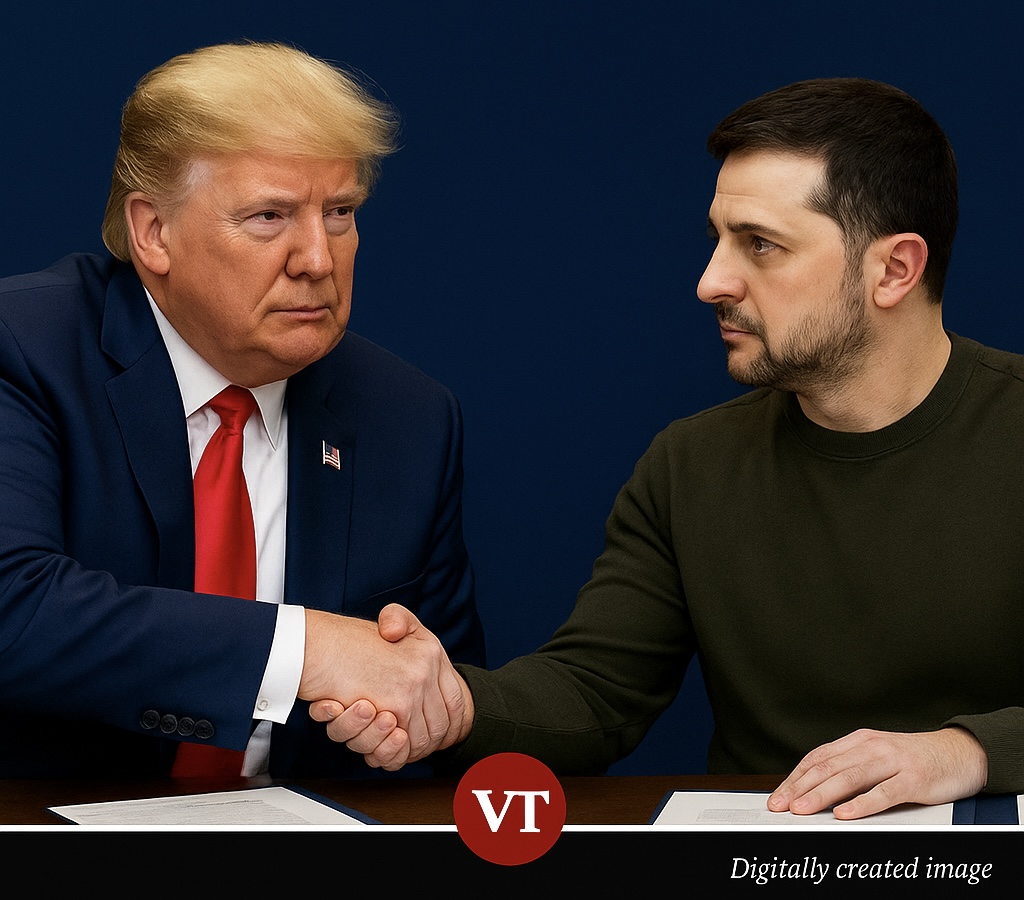WASHINGTON, D.C. – After months of tense diplomacy and a highly publicized February clash between President Donald Trump and Ukrainian President Volodymyr Zelensky, the United States and Ukraine have officially signed a landmark agreement establishing the United States–Ukraine Reconstruction Investment Fund.
Announced on April 30 by the U.S. Department of the Treasury, the agreement marks a turning point in U.S.-Ukraine relations, launching a new economic partnership intended to fund Ukraine’s post-war reconstruction, facilitate private investment, and reinforce Western solidarity against Russian aggression.
Trump: “A Deal That Delivers Peace and Protection”
During a televised town hall appearance with NewsNation, President Trump described the agreement as “a strong and strategic deal that brings peace closer and ensures America is protected.” He added, “I told Zelensky, if we’re going to do this, it has to work for both countries—and now it does.”
Trump praised the fund as a “win-win” that prioritizes American security and economic interests while helping Ukraine rebuild critical infrastructure and strengthen its economy. “We’re investing in peace. But we’re also making sure American taxpayers see accountability and results,” he said.
February Oval Office Confrontation
The finalized deal comes just two months after a dramatic breakdown in talks during Zelensky’s visit to the White House in February 2025. According to administration sources, what was expected to be a ceremonial signing turned into a closed-door standoff, with President Trump reportedly accusing Zelensky of “playing games with World War III.”
The Ukrainian delegation walked out without signing, and Trump later called the visit “unproductive and disappointing.” In the days that followed, the White House temporarily froze certain forms of non-lethal aid to Ukraine, further straining relations.
European allies at the time expressed concern over the incident, warning that U.S.-Ukraine tensions could embolden Russia.
However, behind-the-scenes diplomacy resumed in March, with both countries eventually agreeing to revised terms that address Ukraine’s concerns over sovereignty, debt obligations, and fair profit-sharing.
Key Elements of the Reconstruction Investment Fund
- Infrastructure Rebuilding: Investment will prioritize rebuilding Ukraine’s power grid, roads, hospitals, housing, and digital networks.
- Private Sector Incentives: American and Ukrainian businesses will be encouraged to co-invest in projects, opening opportunities in construction, logistics, technology, and renewable energy.
- Resource Cooperation: The agreement grants U.S. companies controlled access to Ukraine’s critical minerals such as lithium, titanium, and rare earth elements.
- Sovereignty Guarantee: Ukraine retains full ownership of its subsoil resources and final authority on project approval.
- Reinvestment Clause: Profits earned through the fund must be reinvested in Ukraine for at least ten years.
- Exclusion of Russian Affiliates: The agreement bars entities that supported Russia’s war effort from participating.
- Debt Relief: Ukraine is not required to repay previous U.S. military assistance.
Statements from U.S. and Ukrainian Officials
U.S. Treasury Secretary Scott Bessent called the fund a “historic partnership,” praising President Trump’s leadership. “This agreement signals clearly to Russia and the world that the United States is committed to a sovereign, thriving Ukraine—and to a future free from war profiteering.”
Ukrainian Finance Minister Serhiy Marchenko, speaking from Kyiv, hailed the deal as “a turning point for our country,” emphasizing that Ukraine “stood its ground to secure fair terms.”
Geopolitical and Economic Impact
The agreement is seen not only as a reconstruction tool but also as a geopolitical signal: the U.S. is positioning itself as a central partner in shaping Ukraine’s post-war future. With China and Russia watching closely, Western analysts believe the fund strengthens U.S. influence in Eastern Europe and ensures American firms gain early access to Ukraine’s reconstruction economy.
The Biden-era “Build Back Better World” initiative had earlier laid groundwork for infrastructure partnerships, but Trump’s administration has now fast-tracked this fund with a sharper focus on resource security and economic returns.
Next Steps
Officials say the fund could become operational as early as July 2025, with initial investment rounds targeting war-damaged regions such as Kharkiv, Mykolaiv, and parts of eastern Ukraine. Early projects will focus on rebuilding energy grids, constructing modular housing, and restoring port facilities essential to grain exports.
While tensions linger from past disputes, both governments are now aligned on a common goal: rebuild Ukraine, deter future aggression, and foster lasting economic ties between Washington and Kyiv.
Source: U.S. Department of the Treasury official press release, April 30, 2025
Related Coverage: NewsNation Town Hall, Trump-Zelensky February Clash – Summary
A global media for the latest news, entertainment, music fashion, and more.














